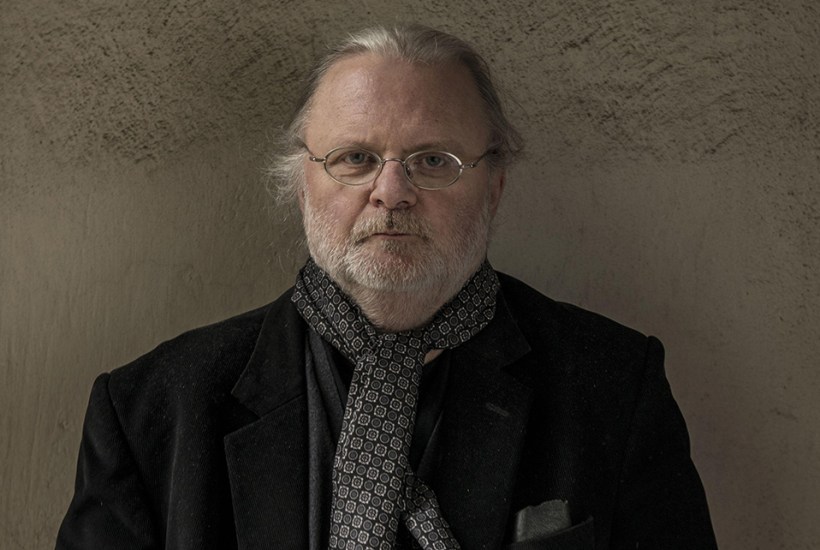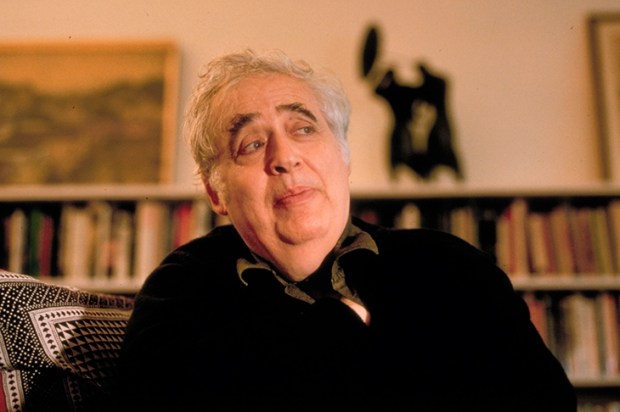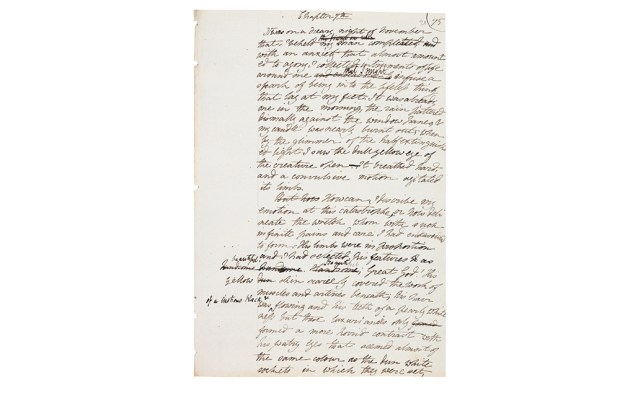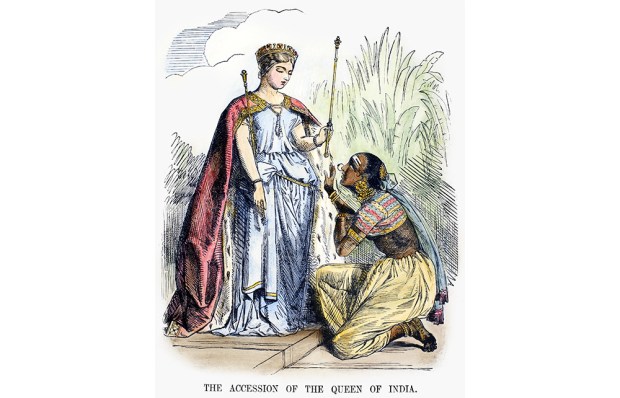The Nobel Prize for Literature this year was awarded to the Norwegian novelist and playwright Jon Fosse (pictured). He has long been admired by anyone in the literary world keen to advertise their seriousness. The Canadian critic Randy Boyagoda, writing of Fosse’s Septology in the New York Times, said that he’d ‘come into awe and reverence myself for idiosyncratic forms of immense metaphysical fortitude’.
Fosse is published in Britain by Fitzcarraldo Editions, that elegant firm bringing all sorts of high-minded writers to our attention in matchy-matchy formats. The Spectator’sliterary editor observed recently, very truly, that its navy spines now occupy the same chic place in bookshelves as the white spines of Picador did in the 1970s and early 1980s.
The major works available are Aliss at the Fire (a translation of Det er Ales; it was thought by Fosse’s translator Damion Searls that It’s Ales wouldn’t do), Scenes from Childhood, including some other short pieces, and Septology, a sequence of texts. The most recently translated is a novella, A Shining.
Of these, Septology is the most acclaimed. The seven texts are all very similar and tell about two male painters, both called Asle, and their wives, both called Ales. One painter is a persistent alcoholic; the other has given up. One has a friend called Asleik, a fisherman. One wife is dead; the other is still alive. The subject of the book is the agony of artistic creation, and there’s a good deal about mystical theology. It is written in a single uninterrupted sentence, as the narrator wanders through the world. The technique is to bury statements of mystic vision or horror in piles of mostly tiny and uninteresting events with a dedicated, unevocative flatness:
… and then the man who shook him by the shoulder goes back and sits down on the chair again and then the woman sitting at the reception desk asks if everything’s all right and I say yes and then I ask her if she can call me a taxi and she says that she can see a taxi sitting outside The Hospital, it’s probably free, she says, so I could go ask if that one’s free first, she says, and if it isn’t free then of course she’ll call a cab for me, she says and I say thank you…
Aliss at the Fire is an earlier work from 2003, which similarly conflates very similar people with the same names in a dogged interiority. Fosse aims a brick at one of the firm convictions of most writers, that it’s much more vivid not to write ‘She noticed that it was starting to snow’ but ‘It was starting to snow’. Everything here is caked in such mounds of perception that all that’s left is a thin world and an indistinct sort of consciousness telling us that it’s thinking or seeing or looking.
Who is there she thinks but no she is standing right here, in front of the window, she is standing here and looking out, so why did she get it into her head that she was standing down there on the big road, as though dissolved? Why see something like that and think something like that? No it can’t be, she thinks, because she’s standing here, here in front of the window, and she’s looking out, but she can’t stay standing here in front of the window, after all she stands here so much, she just stands like this almost all the time, stands and looks out the window…
The end result, as in Septology, is exhaustingly jejune – thin gruel spread out at what seems (in Aliss) and genuinely is (in Septology) colossal length. None of this appears very penetrating about the individual psyche, and in the Scenes from Childhood volume a series of brief vignettes from early memory don’t take us much further. A lot of them are what ought to have been felt, according to centuries of the most banal literature, at a relation’s death, or at first glimpsing a beautiful girl.
Girls are not Fosse’s strong point; he is a startlingly non-diverse writer to win a big prize today. In the case of his women, he tends to stand there goggling at their breasts rather than telling us anything distinct about them. There is, however, a compelling short piece in the volume where the unbroken paragraph and banality of description pay dividends. A vile neighbour kills a man’s dog; the man goes and kills the canicide with a pitchfork; questions start to close in on the man, and the rest of the community wonder where his dog has got to. For once, the manner and the subject seem well matched.
A Shining is an allegory of almost medieval naivety. A man gets out of his car in the snow and walks into a forest (why?). There he comes across a shining object, and his dead mother and father, who speak but about whom we learn nothing. Then another man appears, barefoot in the snow, and we presume that the man has died.
My general view of Fosse is that his novels are seen as experimental – but that is a statement of genre, with that genre’s by now firm conventions – rather than as ones that carry out interesting experiments or speculate about their own means. ‘Experimental novels’ (the shelf in Waterstones, as it were) very often have sentences that run to whole chapters, like Molly Bloom’s soliloquy in Ulysses. They have characters with the same names, something Adalbert Stifter did in 1869 in his story ‘Der Fromme Spruch’, in which everyone is called Dietwin or Gerlint; there are no descriptions; the present tense is used, and dialogue has no quotation marks.
Real experimental novels are Finnegans Wake and Russell Hoban’s Riddley Walker, Georges Perec’s La Disparition and Richard Beard’s splendid The Cartoonist – which was a grossly defamatory manuscript and published according to the precise requirements of the libel lawyers. They are Virginia Woolf’s Jacob’s Room, Ronald Firbank’s Concerning the Eccentricities of Cardinal Pirelli and the works of Ivy Compton Burnett. They teach you their rules as they go along.
One of the characters in Septology lives near a town called Vik on a fjord. As it happens, this summer I was on a slow ferry that pulled into Vik, and as it did I was seized with a gut-deep longing, a recognition as from childhood – the grandeur of the landscape with that Norwegian cloud, ten feet off the ground, the thunderous backdrop to the small town – and could only say ‘I want to get off. Here. Here. Let’s get off here,’ and went on saying so until we were well out of port. Everyone knows that ferocious feeling, though it’s unique to each of us. But Fosse’s mode of writing would never permit him to come near expressing a specific, passionate response like that. You could set him down in front of the splendour of Vik – which no doubt he would regard as banal and passé to talk about – and what his style would allow him to say is: ‘She sits in front of the window and looks out at the fjord.’ There’s no future in that sort of thing.
Got something to add? Join the discussion and comment below.
Get 10 issues for just $10
Subscribe to The Spectator Australia today for the next 10 magazine issues, plus full online access, for just $10.
You might disagree with half of it, but you’ll enjoy reading all of it. Try your first month for free, then just $2 a week for the remainder of your first year.














Comments
Don't miss out
Join the conversation with other Spectator Australia readers. Subscribe to leave a comment.
SUBSCRIBEAlready a subscriber? Log in